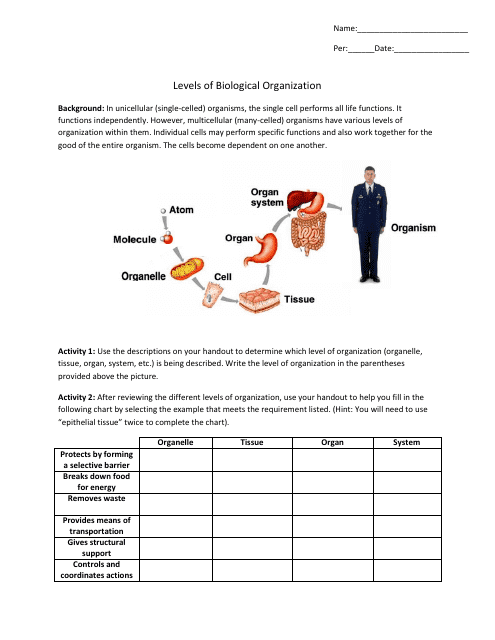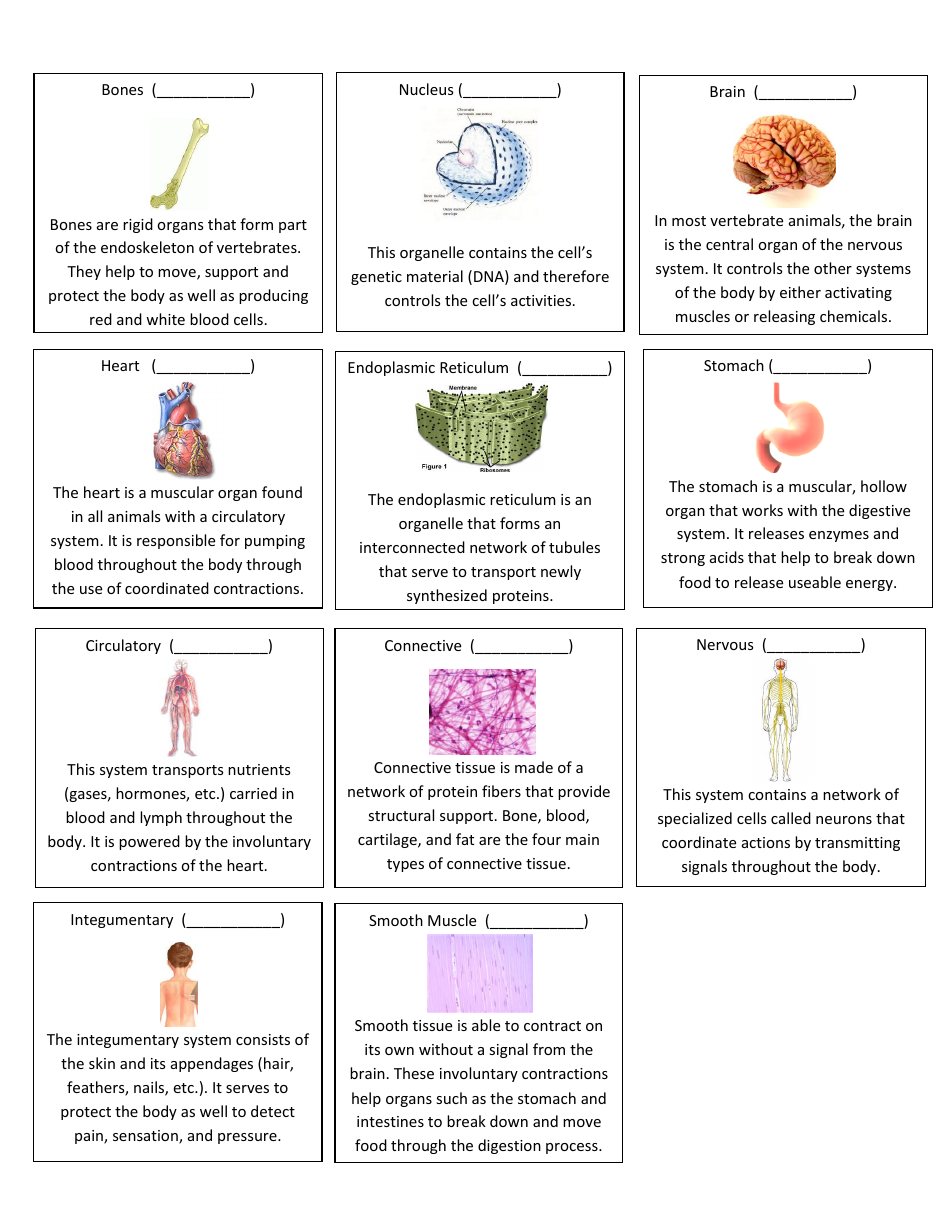Levels of Biological Organization Worksheet - Biology 231 Anatomy and Physiology, Portland Community College
The "Levels of Biological Organization Worksheet - Biology 231 Anatomy and Physiology" is a college-level worksheet designed for the course "Biology 231 Anatomy and Physiology" offered at Portland Community College. This worksheet is specifically related to the topic of levels of biological organization. It is likely intended to help students understand and assess their knowledge of the different levels of organization within living organisms, ranging from molecules and cells to tissues, organs, organ systems, and ultimately, the entire organism. This worksheet may involve identifying and describing the characteristics of each level and how they interact to maintain the overall function and homeostasis of an organism.
The Levels of Biological Organization Worksheet for Biology 231 Anatomy and Physiology at Portland Community College is typically filed by the students enrolled in the course.
FAQ
Q: What are the levels of biological organization?A: The levels of biological organization are: cells, tissues, organs, organ systems, and organisms.
Q: What is a cell?A: A cell is the basic structural and functional unit of all living organisms.
Q: What is a tissue?A: A tissue is a group of similar cells that work together to perform a specific function.
Q: What is an organ?A: An organ is a group of different tissues that work together to perform a specific function.
Q: What is an organ system?A: An organ system is a group of organs that work together to perform a specific function.
Q: What is an organism?A: An organism is an individual living thing that can carry out all the basic functions of life.
Q: Why is understanding levels of biological organization important?A: Understanding levels of biological organization is important because it helps us understand how different parts of an organism work together to maintain life.
Q: What is the relationship between cells, tissues, organs, organ systems, and organisms?A: Cells make up tissues, tissues make up organs, organs make up organ systems, and organ systems make up organisms.
Q: Can you give an example of how the levels of biological organization interact?A: For example, in the respiratory system, cells in the lungs form tissues, these tissues together form the lungs, which is an organ. The lungs, along with other organs like the trachea and bronchi, make up the respiratory system, which is an organ system. The respiratory system works together with other organ systems, such as the circulatory system, to ensure the body gets oxygen and removes carbon dioxide.







